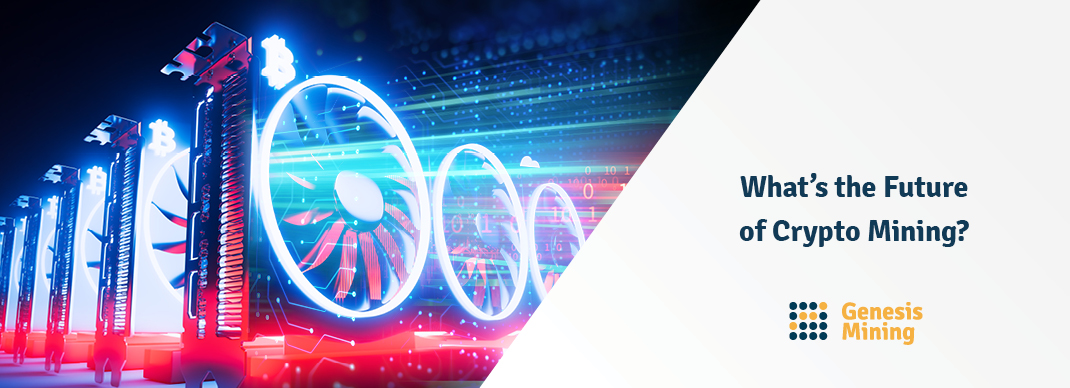[ad_1]
Though crypto mining is associated with decentralized principles and non-renewable energy consumption, it’s going to become more centralized and environmentally friendly over time. Research from CoinShares shows that about 70% of mining is already happening with renewables.
We have a clear vision of crypto mining’s past: it was a lucrative hobby for nerdy college kids in dorm rooms (like me!) that evolved to become a highly competitive industry worth billions of dollars. This industry evolved away from at-home miners to more efficient large-scale businesses. These are the players who have tweaked every single operational component for maximum efficiency and performance.
Crypto mining is a high-volume industry, so it’s harder than ever for the lone individual to play a meaningful role. Crypto mining data centers squeeze out every last bit of performance from every mining rig for maximum results. They don’t even need to deploy near civilization, but can set up shop anywhere that offers them cheap electricity and reliable internet access. The business-minded guys operating at scale can more easily implement these kinds of pragmatic decisions.
That’s why those who want to play a meaningful role in mining will flock to cloud mining services. These businesses let you mine your own cryptocurrency using their highly specialized and super-charged mining hardware. The at-home miner is barely a ping on the mining radar these days. Those who use cloud mining services actually form the meaningful foundation that holds everything else up.
We can draw a clear comparison between crypto mining and gold mining. In the beginning of the Gold Rush, you could find gold rather easily by panning in a river. As time passed and people kept panning, the processes to successfully uncover more gold eventually required a new level of sophistication — digging into the ground with pickaxes or other powerful tools. This echoes crypto mining’s shift from running a client on your laptop (which used to be effective) to cloud mining, the supercharged “drill” necessary to make an impact nowadays.
At the same time, there are a number of exciting ideas for delivering greener, more eco-friendly blockchain technology. Because of the fundamental economic incentive to mine, companies are motivated to bring new efficiencies and reduced costs to the equation wherever they can. This means transitioning large-scale mining operations to renewable energy, identifying greener algorithms for the machines to run, and generally consolidating mining operations to a few big companies.
It’s an exciting time to be in the crypto mining space. I spend a lot of time thinking about the future of this industry, so here are my three big predictions for crypto mining.

Bitcoin will remain a useful means of transaction and a reliable store of value.
Bitcoin is the cryptocurrency that launched a thousand cryptocurrencies. It’s well-established as a secure, open-source digital currency that’s transactable between any two parties in the world, it requires exactly zero third-party middlemen to function, and it has more than ten years of momentum behind it. It’s a compelling piece of technology for anyone locked out of the mainstream financial world.
For every year that passes, Bitcoin seems to get stronger — it has a history of successfully navigating through crises in the past, and there’s no reason to think this trend should change.
The blockchain industry will further develop and mature.
The so-called “blockchain industry” refers to the companies and individuals that use cryptocurrency technology to solve problems in spheres beyond cryptocurrency. It sprang up shortly after the anonymous Satoshi Nakamoto introduced Bitcoin to the world in January 2009. The blockchain industry has generated so much compelling press that mainstream banking player JP Morgan has ramped up its own blockchain initiative.
Still need more evidence that blockchain technology is actually useful? West Virginia held a portion of its state elections last year using blockchain-powered voting app. The hooks are already in, and everything suggests blockchain will take us deeper.
Crypto mining will prop it all up.
There’s no house without a foundation, and crypto mining is surely that foundation for blockchain technology. This stuff only works because crypto mining hardware runs in the background, executing complicated cryptographic math to verify transactions. As blockchain technology proliferates, it’s only happening because crypto mining rose to keep pace with it.
That’s why I’m bullish on crypto mining — it’s the heart and soul at the center of all these exciting use cases. I want my company to set the tone for best blockchain practices while establishing a new technological normal. When technology delivers a new kind of normal, it creates a bunch of new problems for innovators to solve at the same time.
That’s where we are with blockchain — miles to go, but lots of energy and excitement for getting there.
[ad_2]
Source link



